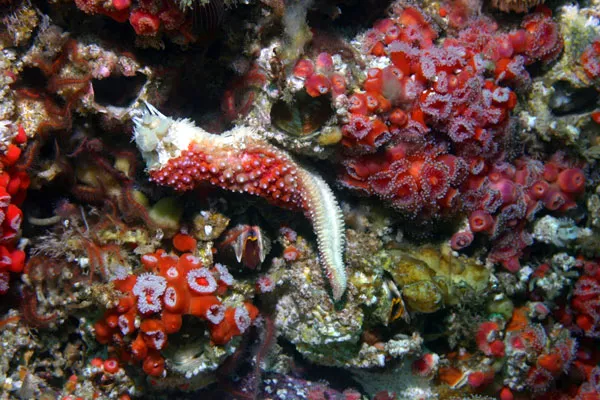Virus cause of sea star wasting disease
A type of parvovirus has been identified as the culprit behind an infectious disease that has spread along the US West Coast wiping out millions of starfish
The first symptom is white lesions that appear on the surface of the starfish and spread rapidly, followed by decay of tissue around the lesions. Eventually, the sea stars' bodies begin to break down; Limbs pull away from the sea stars' bodies and organs exude through their skin and the starfish dies within a few days.
In a paper in this week's issue of the journal Proceedings of the National Academy of Sciences, microbiologist Ian Hewson of Cornell University and colleagues present the results of genomic analysis of the virus prevalent in symptomatic sea stars.
There are 10 million viruses in a drop of seawater, so discovering the virus associated with a marine disease can be like looking for a needle in a haystack
Ian Hewson
Lurking threat
Hewson suggests that the virus has been smouldering at a low level for many years. It has been detected in museum samples of sea stars collected in 1942, 1980, 1987 and 1991 and may have risen to epidemic levels in the last few years due to sea star overpopulation, environmental changes or mutation of the virus.
At the beginning of September 2013, a substantial die-off of starfish was reported off the coast of British Columbia. The seabed was strewn with disintegrating sunflower stars and morning sun stars. By November 2013, ochre stars, usually common on mussel beds in places like California's Natural Bridges State Marine Reserve, had vanished from such locales.
- Log in to post comments

























